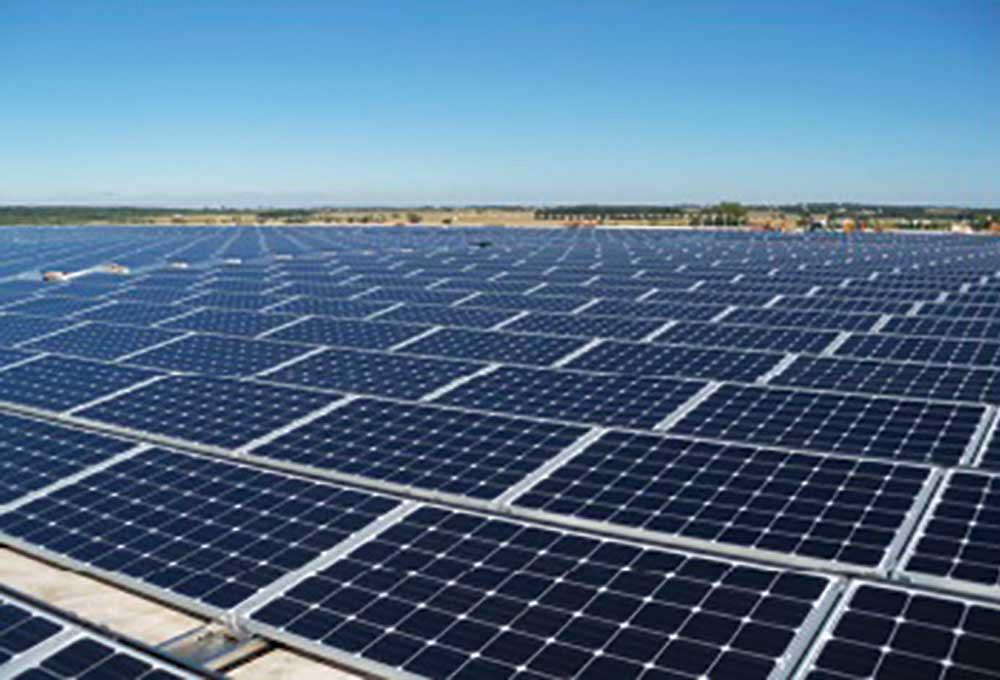Contributing editor
- FMA
- The Fabricator
- FABTECH
- Canadian Metalworking
Categories
- Additive Manufacturing
- Aluminum Welding
- Arc Welding
- Assembly and Joining
- Automation and Robotics
- Bending and Forming
- Consumables
- Cutting and Weld Prep
- Electric Vehicles
- En Español
- Finishing
- Hydroforming
- Laser Cutting
- Laser Welding
- Machining
- Manufacturing Software
- Materials Handling
- Metals/Materials
- Oxyfuel Cutting
- Plasma Cutting
- Power Tools
- Punching and Other Holemaking
- Roll Forming
- Safety
- Sawing
- Shearing
- Shop Management
- Testing and Measuring
- Tube and Pipe Fabrication
- Tube and Pipe Production
- Waterjet Cutting
Industry Directory
Webcasts
Podcasts
FAB 40
Advertise
Subscribe
Account Login
Search
6 ways to reduce plant emissions
Save energy, reduce greenhouse gas emissions
- By Kate Bachman
- November 24, 2017
- Article
- Bending and Forming

Grooming products manufacturer Wahl® installed a 2,400-panel solar energy system on its headquarters plant to supply emissions-free energy to its operations there. Photo courtesy of Wahl, Sterling, Ill.
The preindustrial concentration of carbon dioxide (CO2) in the atmosphere was 280 parts per million (PPM). As of December 2016, it was 404.93 PPM. The amount of CO2 in the atmosphere is higher than at any time in the last 650,000 years, according to the National Aeronautics and Space Administration (NASA) https://climate.nasa.gov/evidence.
Because consuming energy from fossil-fuel (coal, natural gas, oil) sources generates carbon dioxide, methane, and other gases that promote a greenhouse gas (GHG) effect, reducing energy from these sources reduces GHG emissions. Burning 1 gallon of gasoline puts nearly 20 pounds of CO2 into the Earth’s atmosphere, according to the U.S. National Park Service.
Here are six ways stamping manufacturers can reduce their energy consumption and, therefore, GHG emissions, as reported by the U.S. Department of Energy (DOE) Energy Information Administration (EIA) and ENERGY Star (www.energystar.gov/industry):
1. Energy-saving Equipment, Machinery
- Compressed air—Is the system optimized, and has a leak program been established?
- Motors, drives, pumps—Are you using the most efficient motors, variable-frequency drives (VFD), and pumps?
- Off = zero emissions—Is equipment shut off when not in use?
- Presses—Are your presses equipped with energy-saving features, such as servo drives, regenerative braking, energy banks, and capacitors?
2. Facility HVAC, Lighting
- Heating—Can heater, boiler, and fired systems’ set points be changed? Are they optimized? Are heat recovery options available?
- Cooling—Can cooling systems’ and chillers’ set points be changed? Can the cool temperatures be recovered and reused?
- Lighting—Is lighting technology updated with sensored systems and high-efficiency technologies?
3. Fleets and In-plant Vehicles
- Are you making good use of conveyor systems, automated guided vehicles, and carted systems to limit the number of lift trucks you use? Are you using an electric or hybrid lift truck fleet?
- Does your highway fleet operate using biofuels? Do you use rail transportation when possible?
4. Energy Management
- Have you developed an energy management plan?
- Do you participate in a demand response program?
- Do you use sensors and controls to monitor your usage?
- Do you look for energy recovery and reuse opportunities?
5. Renewable Energy
Renewable energy (solar energy, wind power, hydropower, geothermal, biotechnology) grew at an average annual growth rate of 35 percent from 2010 to 2015, according to Forbes, and wind and solar accounted for more than 10 percent of U.S. electricity generation in March 2017, according to the DOE EIA. Are you taking advantage of the opportunities to source emissions-free renewable energy to power your plant and equipment, either on-site or from centralized power stations?6. Heated Water Recovery
- Because reducing heated water reduces energy consumption, do you use counterflow wash stations?
- Do you have an opportunity to recover heat from a water system and reuse it elsewhere in your plant?
About the Author

Kate Bachman
815-381-1302
Kate Bachman is a contributing editor for The FABRICATOR editor. Bachman has more than 20 years of experience as a writer and editor in the manufacturing and other industries.
subscribe now

The Fabricator is North America's leading magazine for the metal forming and fabricating industry. The magazine delivers the news, technical articles, and case histories that enable fabricators to do their jobs more efficiently. The Fabricator has served the industry since 1970.
start your free subscription- Stay connected from anywhere

Easily access valuable industry resources now with full access to the digital edition of The Fabricator.

Easily access valuable industry resources now with full access to the digital edition of The Welder.

Easily access valuable industry resources now with full access to the digital edition of The Tube and Pipe Journal.
- Podcasting
- Podcast:
- The Fabricator Podcast
- Published:
- 04/16/2024
- Running Time:
- 63:29
In this episode of The Fabricator Podcast, Caleb Chamberlain, co-founder and CEO of OSH Cut, discusses his company’s...
- Trending Articles
Tips for creating sheet metal tubes with perforations

JM Steel triples capacity for solar energy projects at Pennsylvania facility

Are two heads better than one in fiber laser cutting?

Supporting the metal fabricating industry through FMA

Omco Solar opens second Alabama manufacturing facility

- Industry Events
16th Annual Safety Conference
- April 30 - May 1, 2024
- Elgin,
Pipe and Tube Conference
- May 21 - 22, 2024
- Omaha, NE
World-Class Roll Forming Workshop
- June 5 - 6, 2024
- Louisville, KY
Advanced Laser Application Workshop
- June 25 - 27, 2024
- Novi, MI


























